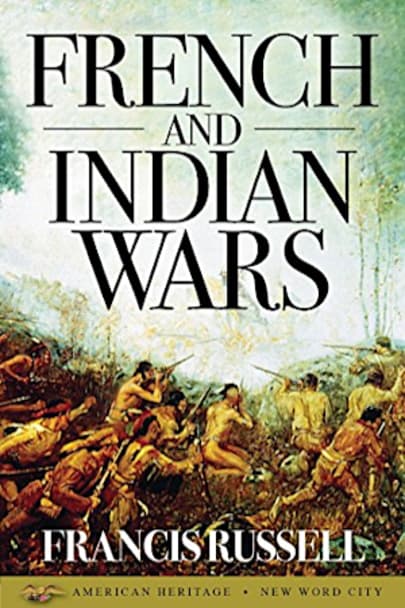In the colonization of North America, Great Britain, France, Spain, the Netherlands, and Sweden each sought a share. By the eighteenth century, only Great Britain and France remained as rivals for the heart of the continent.
Three times, beginning in 1690, warfare arose between New France and New England. Settlements were destroyed, and armies clashed, yet nothing was settled. Each country … Each country regarded the Ohio Valley as its own. A small skirmish in 1754 touched off a war that spread to Europe, then to Africa, Asia, and even to islands in the Atlantic and Pacific. The fate of North America hung in the balance. This conflict, the Great War for the Empire, may well be called the first of the world wars.
Here, award-winning historian Francis Russell brings to life the vast panorama that formed the background for this struggle in which the English redcoats fought side by side with American colonists against French soldiers and their Indian allies.
more



A simple history book about an interesting time. A war that setup the conditions for the American and French revolutions.
I have read a number of books dealing with the early times in our nation but this book was the most explicit in its descriptions of the cruelty imposed on one another during this period.
I did not enjoy this book
Good book
Should be taught in schools. Explains why native Americans were not trusted in the nineteenth century. Also why the colonists could not count on the British to protect them.
Great history of the French and Indian War.
While most of us think that there was only one French and Indian war fought in pre-revolutionary America, the author reminds us that there were several “wars” fought between the French and their native allies and the British (which term is meant to include their colonial inhabitants of the British colonies strung out along the east coast of North America who spoke English and identifies themselves as British subjects) and their native allies. These conflicts were part of a worldwide contest between Great Britain and France to control the affairs of the major powers in Europe and to protect each country’s overseas colonial empire. In a very real sense, the colonial conflicts of the mid-18th century constituted the North American theater of operations in a global conflict. While referred to by different names in America and Europe, the fighting on America’s frontiers must be viewed as part of a larger whole to understand fully the implications of the waxing and waning of each mother country’s fortunes in North America.
It is interesting to speculate as to the course of history on the American continent if the French had been victorious in these colonial contests. The colony of New France would have extended from Quebec in Canada, down the river systems of the St. Lawrence, the Ohio, and the Mississippi all the way to Louisiana and to New Orleans on the Gulf of Mexico. The presence of a colony with adverse interests and occupying such strategic positions would have have hemmed in the British colonies, confining them to a relatively narrow band of territory east of the Appalachians. The trans-Mississippi west,the greater Ohio RIver valley, and all the lands to the west of those areas would have been French territory and largely closed to the great majority of settlers whose migration from the east coast to the Pacific was the story of the United States and the settling of the North American continent.
As the author also points out, the experience of the colonials during the several conflicts which he aggregates under the inclusive title of the French and Indian Wars, proved to be valuable when approximately 10 years after the final defeat of the French at the Battle of Quebec, the colonies would once more take up arms, this time against their colonial masters. A number of colonial officers, including Washington, had gotten their military experience by serving with the British forces against the French. They had seen how “fighting like Indians” could be an effective tactic to take against highly trained regular troops, and they had developed a sense of “us” as opposed to “them” (England as an adversarial power rather than a colonial protector.) By giving the colonists a vision of a possible union of states rather than a loose collection of allied colonies, these frontier conflicts created something intangible within these allied colonies that allowed the colonial leaders to dare to dream that the establishment of a new and independent nation was not only possible, but divinely ordained. The new nation was , in fact, more than a loose confederation of neighboring colonies, it was a nation of united states, the United States of America.
Informative narrative of century of brutal warfare between the French and English and the Native American tribes that supported both sides. Very well written.
A very interesting book on a period of history that I knew very little about. Learned a lot
Interesting and informative but language is outdated. Needs a new edition.
Mostly about battles and campaigns. I got a better overview about the decades of war, but it was not my cup of tea.
Good history of French and English conflict to gain control of North America in
pre-revolutionary era.